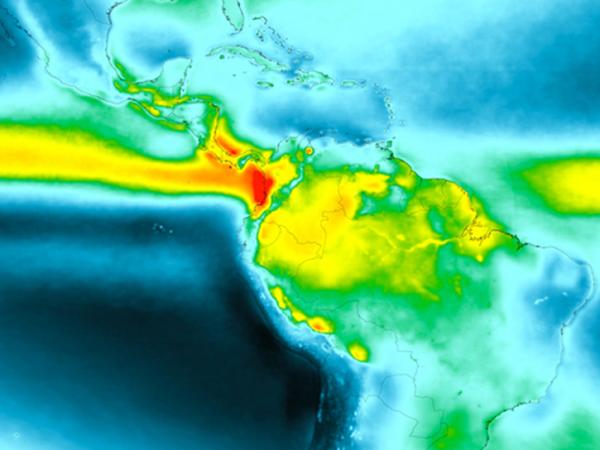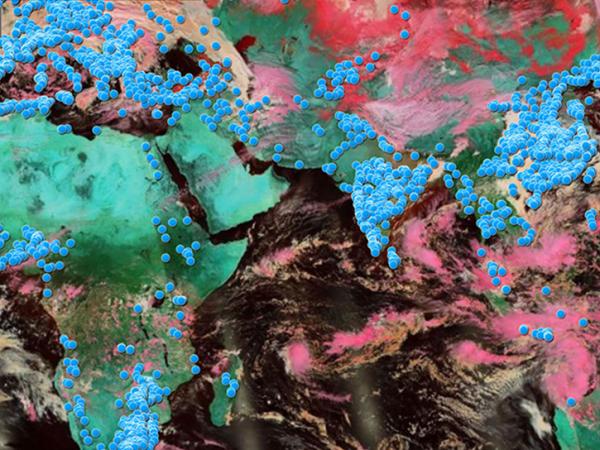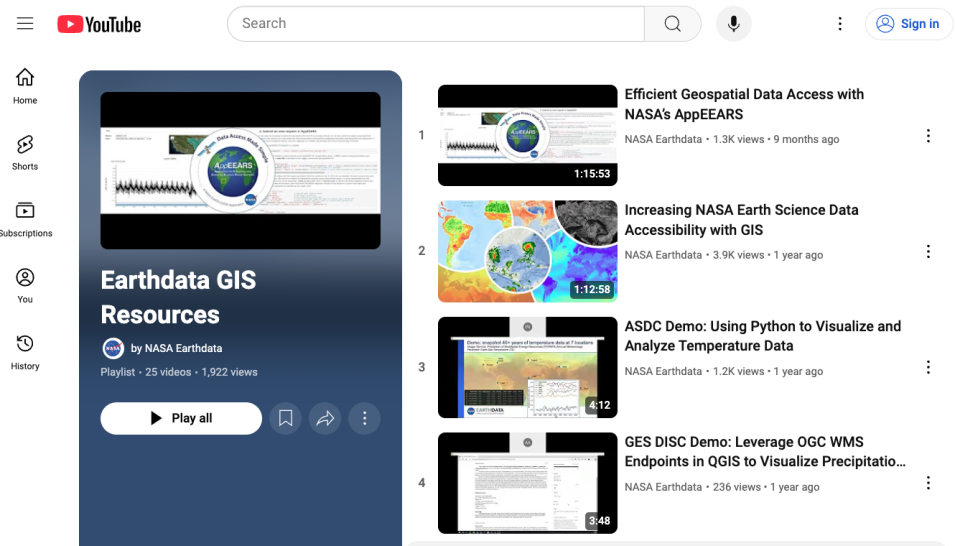The vision of NASA's Earth Science Data Systems (ESDS) Program is to identify and deliver high value Earth science data in formats compliant and compatible with GIS standards; to ensure data are interactive, interoperable, available, and GIS-enabled through primary GIS platforms; and to provide the maximum impact to research, education, and public user communities requiring data visualization and spatial analysis.
We provide links to resources for accessing and using GIS-based Earth science data and assume a basic understanding of GIS and GIS-based applications. If you are unfamiliar with GIS or want more information about some of the terms and concepts described below, please see the About GIS page. Additionally, the GIS Playlist on the Earthdata YouTube channel provides a variety of GIS presentations and tutorials.
Access the Earthdata GIS Portal and discover GIS data at NASA.
Learn more about free data tools such as Worldview and Earthdata Search that can help you optimize your GIS data.
Working with Multidimensional Data in GIS
GIS software has increased support for integrating multidimensional scientific data formats in their platforms. Two commonly used GIS software programs are QGIS and ArcGIS Pro. If you do not have these software packages, visit the following links for more information:
In tools such as QGIS and ArcGIS, support for raster data can be provided using a mosaic dataset. A mosaic dataset is a data model that acts as a shell to input a collection of multiple raster files, which include different file types, and is viewed as a single image. A multidimensional mosaic dataset stores information about the dimensions and variables as fields in the mosaic dataset footprint table. The underlying raster data do not have to be connecting or overlapping but can be isolated or intermittent datasets. In some GIS software platforms, a single mosaic dataset can then be used to query, process, analyze, and serve data.
NOTE: ArcGIS Pro, on which some Use Cases in this Data Pathfinder are based, is designed to run on a Windows-based operating system. Esri provides an informational page for running ArcGIS Pro on a Mac-based operating system.
Using Synthetic Aperture Radar Data in GIS
Interested in Synthetic Aperture Radar (SAR)? The Synthetic Aperture Radar data basics page will help you learn about the benefits and limitations of these powerful data.
Vertex is a data search tool created by NASA's Alaska Satellite Facility DAAC (ASF DAAC) that provides access to a wide array of archived synthetic aperture radar (SAR) data. It also provides access to On-Demand processing for Sentinel-1, which allows users to generate analysis-ready products such as Radiometric Terrain Corrected (RTC) images or Interferometric SAR (InSAR) interferograms from archived Sentinel-1 data.
ASF provides StoryMap tutorials with step-by-step demonstrations that show how to order On-Demand RTC and On-Demand InSAR products. Additional StoryMap tutorials provide guidance on using the custom ArcGIS Toolbox with RTC products and an exploration of InSAR products and how to interpret and use them.



